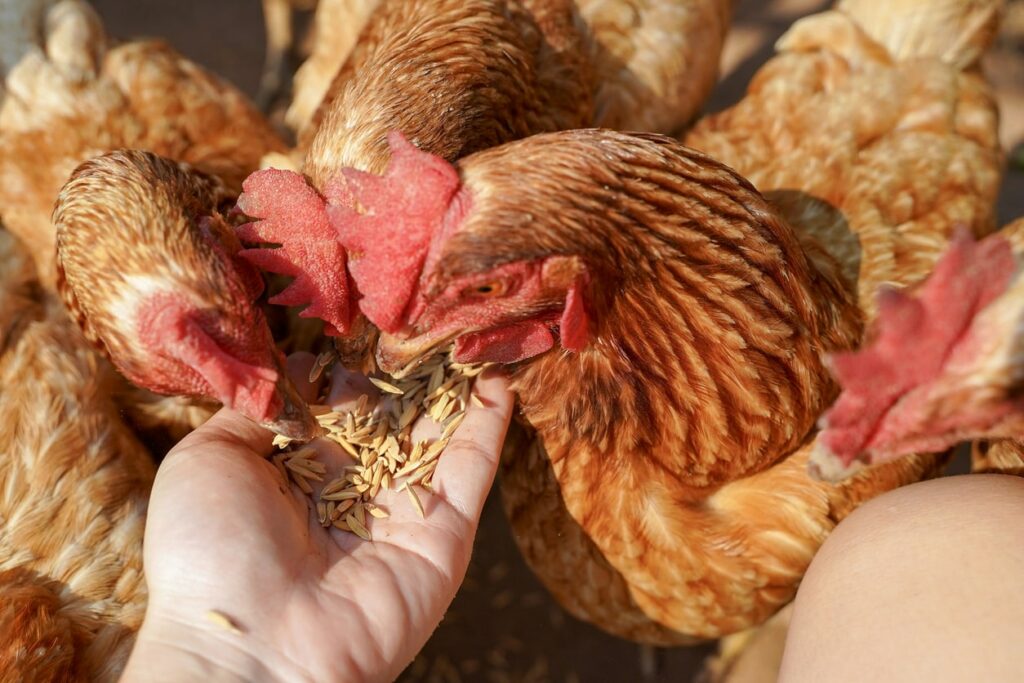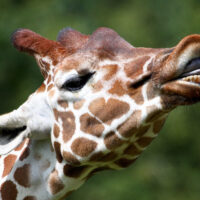Chickens are undoubtedly some of the most common and intriguing farm animals. While they have no trouble devouring their meals, have you ever wondered about the query: Do roosters have teeth?? We’ve all heard the saying “rarer than hen’s teeth,” but how accurate is this popular phrase? In this article, we’ll delve into the world of chicken anatomy, exploring the fascinating truth about their eating habits and the absence of teeth.
Do Roosters Have Teeth?
Do roosters have teeth? To put it simply, no, chickens do not have teeth. Most birds, including chickens, rely solely on their sharp beaks to capture and consume their food. This curious lack of teeth among avian species is not merely coincidental but a result of evolution. Birds underwent a transformative journey that led to the loss of teeth, which, while aiding them in flying more efficiently, left them toothless. However, this adaptation raises an intriguing question: if chickens are not proficient fliers, why have they also forfeited their teeth in the evolutionary process?
The Egg Tooth
A Brief Encounter with “Teeth” While chickens might not possess conventional teeth, there is a temporary exception during their early stages of life. Developing chicks within the confines of their eggs sport a tiny, specialized structure called an egg tooth. This unique feature, located at the tip of the chick’s beak, is harder than the surrounding areas, aiding the chick in breaking free from its eggshell once it has matured adequately.
However, this egg tooth’s role is short-lived. Shortly after hatching, the chicks lose this specialized tool within a matter of days, leaving them with no dental apparatus as they embark on their journey of growth and survival.
Cracking the Code: The Anatomy of a Chicken Beak
A chicken’s beak is a remarkable adaptation designed to facilitate efficient food consumption. Its curvature enables the bird to scoop up its nourishment with ease. When in good health, the upper and lower halves of the beak harmoniously align, ensuring the chicken’s ability to feed without hindrance. Any irregularities in this alignment may necessitate medical intervention, as it could potentially interfere with the bird’s eating patterns.
The beak’s outer layer consists of keratin, the same protein found in our hair and nails. This protective layer shields the underlying soft tissue of the beak. Unlike humans, who possess teeth for both chewing and taste perception, chickens rely on their beaks for these functions. Inside the beak, a rudimentary tongue enables chickens to discern the flavors of their food, albeit with far fewer taste buds compared to humans. Additionally, two nostrils situated at the top of the beak contribute to their sense of smell.
The Art of Toothless Eating: How Chickens Manage Without Teeth
The absence of teeth has not hindered chickens in the slightest when consuming food. Their beaks, equipped with a sharp tip, are adept at pecking and breaking down their meals into manageable pieces. Chickens follow a unique digestive strategy, unlike humans, who rely on thorough mastication before swallowing.
Upon swallowing their food, it enters the crop, a specialized pouch located near the base of their necks. The crop temporarily stores the ingested food until it progresses through the digestive system. The true magic happens when the chicken is at rest. During sleep, the food proceeds from the crop to the gizzard, a bird’s equivalent of a stomach. The gizzard’s muscular walls contract vigorously, grinding the food into smaller, digestible particles. This process mimics the action of chewing in animals with teeth.
Once the food particles attain the desired consistency, they continue their journey through the intestines, where the chicken’s body absorbs essential nutrients. The remaining waste exits the body, completing the digestive cycle. Consequently, chickens bypass the need for conventional teeth by entrusting the job of chewing to their gizzards.
The Adaptive Advantage: Why Chickens Opted for a Toothless Life
The peculiar nature of a chicken’s digestive system serves a crucial purpose: survival. In the wild, animals face the constant threat of predators. The evolutionary adaptation of allowing the gizzard to perform the role of chewing grants chickens a distinct advantage. By minimizing the time spent on consuming and chewing food, chickens can swiftly nourish themselves and remain vigilant against potential dangers. This adaptation is a testament to the intricate balance of survival mechanisms that nature orchestrates.
Do Chickens Bite?
Yes, chickens can bite, but it’s a rare occurrence. They might nip or peck if they feel threatened, but their lack of teeth limits the extent of their impact. While their beaks possess strength, the absence of teeth ensures that any bites are unlikely to cause injury or pain.
Final Words: Do Roosters Have Teeth?
In Conclusion: Embracing Toothless Brilliance The absence of teeth is anything but a limitation for chickens. These remarkable creatures have evolved to thrive without the need for traditional dental structures. Their beaks, adept at breaking down food, work harmoniously with their unique digestive systems. As you observe chickens pecking and devouring their meals, take a moment to appreciate the efficiency and ingenuity of their toothless eating habits. Just as the saying goes, “rarer than hen’s teeth” indeed holds, reminding us of the captivating wonders that nature bestows upon us.



